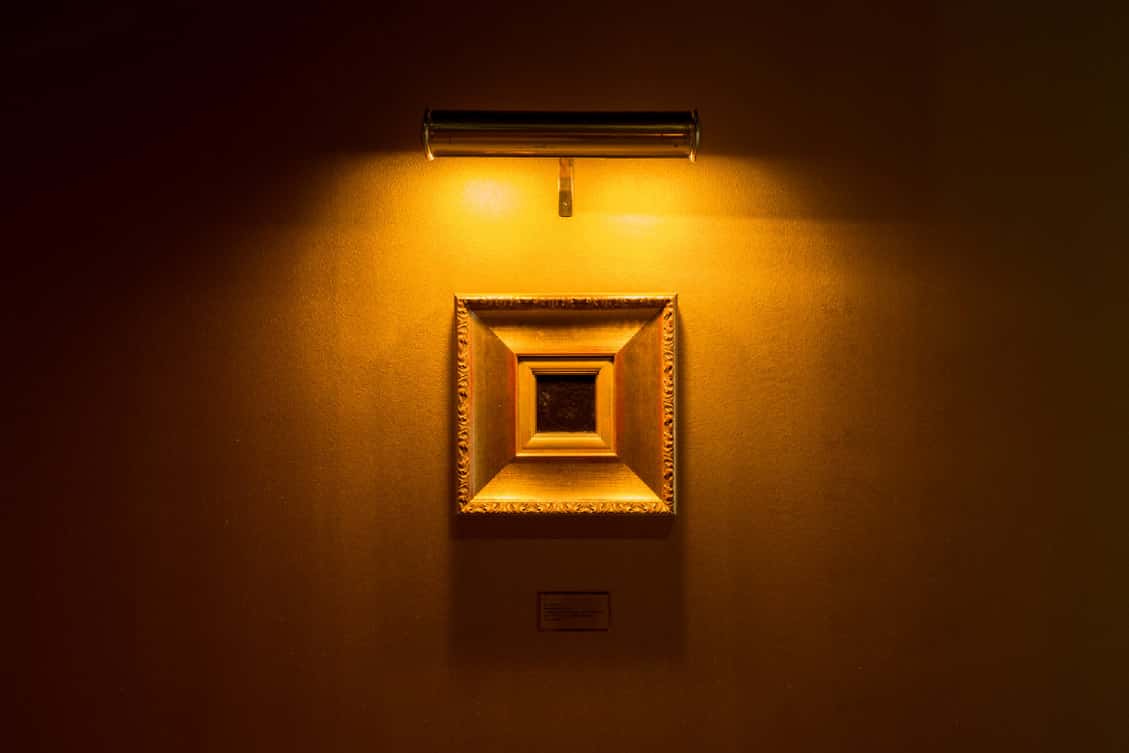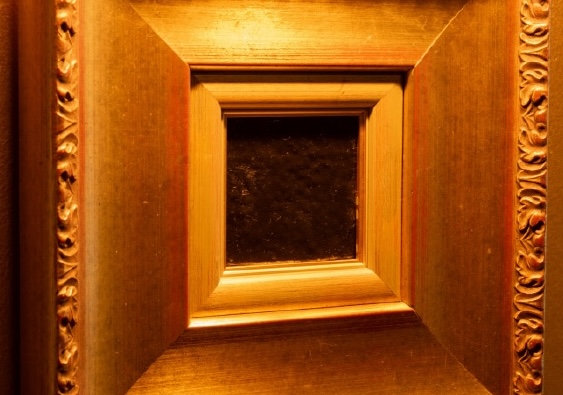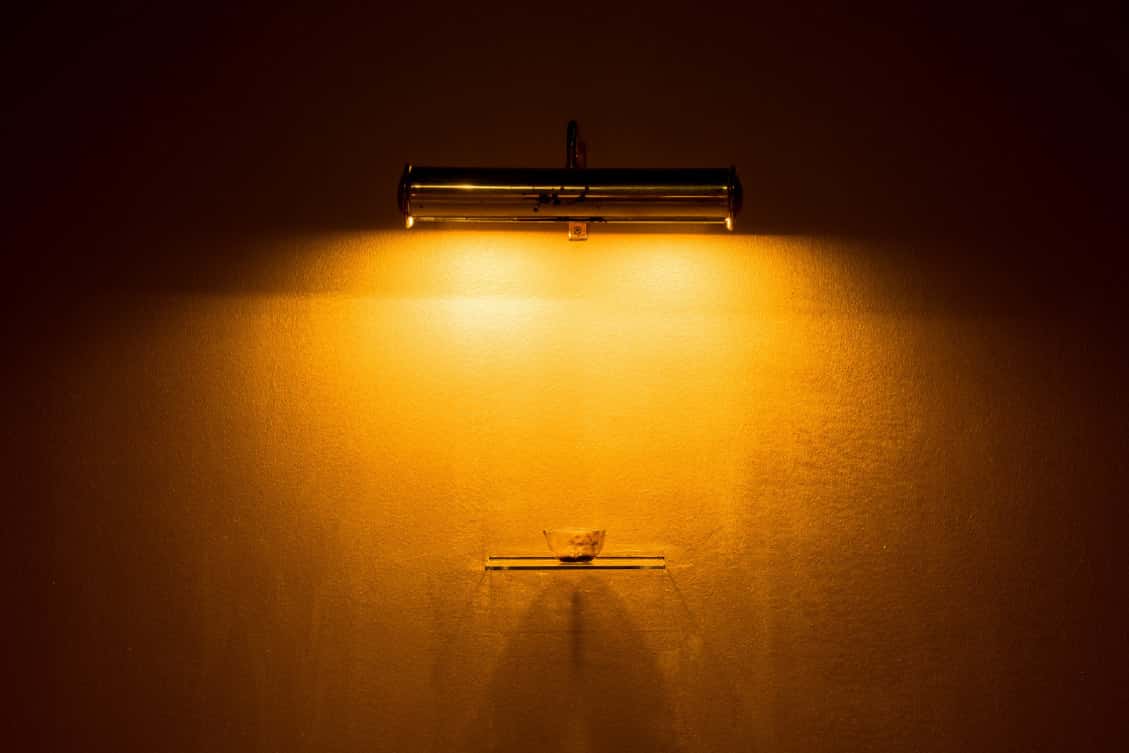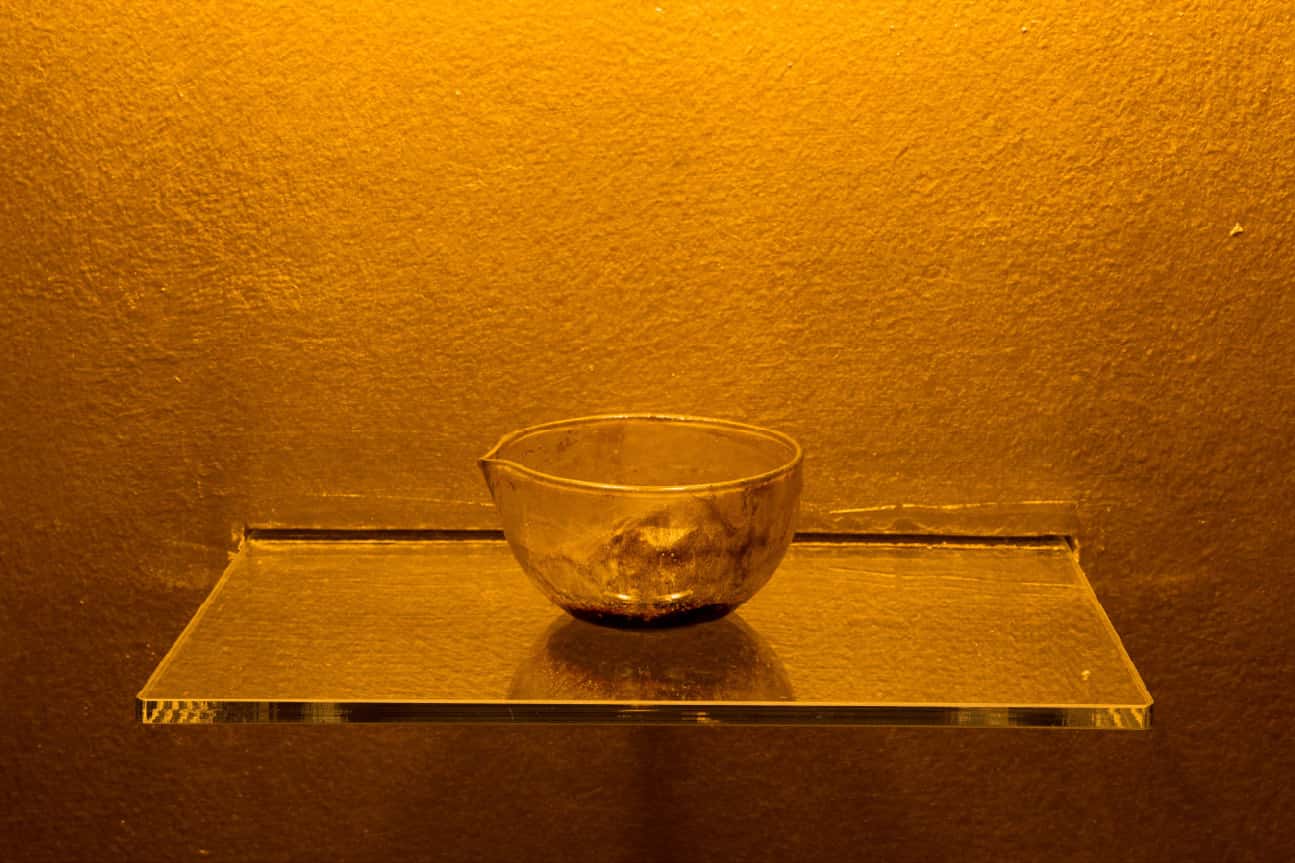thisisthatisthis (2001)
Collected dust from Juan Luna’s Tampuhan (1895), picture light, gold paint, label Installation dimensions variable Gift of the artist Collection of Singapore Art Museum
thatisthisisthat (2001)
Collected dust attributed as Canaletto's Entrance to the Grand Canal from the Molo, Venice (c. 1740s), picture light, gold paint, label Installation dimensions variable Gift of the artist. Collection of Singapore Art Museum
thisisthatisthis and thatisthisisthat present grime collected from the surfaces of historical paintings that is displayed in forms that recall classical paintings and artefacts. The works reflect Gerardo Tan’s ongoing interest in exploring the nature of art and how forms and materiality can articulate ideas and concepts. The works “came about by accident” according to Tan who had chanced upon an art restorer working on Luna’s Tampuhan and Canaletto’s Entrance to the Grand Canal from the Molo, Venice, dabbing the paintings with wet cotton buds to remove dirt and grime from their surfaces. Tan collected the dirt and grime to make these works. For Tan, the dirt is a silent witness to the history of the paintings and a physical trace of the passage of time. Similarly, the works’ titles—presented in lowercase letters and without spaces between the words—allude to the conjunction of time, distance and plane of reference. By staging the grime against a lavish gold wall, Tan transforms what seems insignificant into matter weighted with history. The setting heightens their mundane quality at the same time frames them as treasured relics; they are intimately sized as if they were religious prayer cards. In doing so, Tan asks what the true value in art is when it is not intrinsic to its materiality. As the artist puts it: “Dust is worthless but if it is a 100 years old and collected from the painting of a Filipino master-painter, it somehow achieves an aura of value and real value perhaps if presented as art.”



